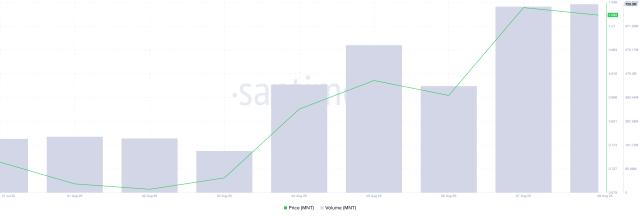Today, the long-awaited GPT-5 is officially released after two years of anticipation.
OpenAI CEO Sam Altman solemnly stated at the launch conference: "GPT-5 will redefine the way humans interact with technology."
This GPT-5, which he referred to as a "doctoral-level expert," not only devours the survival space of traditional tools with its astonishing multi-modal capabilities but also marks the official entry of artificial intelligence into a new era of "all-scenario dominance".
GPT-5's "Routing Revolution"
The core breakthrough of GPT-5 lies in its disruptive system architecture.
This time, it integrates the fast-responding "main model" (gpt-5-main), the deep reasoning "thinking model" (gpt-5-thinking), and the real-time routing system into a unified platform called the "routing system".
It can dynamically allocate computational resources and model combinations based on task complexity, user intent, and even emotional feedback.
For example, when a user inputs "generate an interactive 3D game", the routing system will call the front-end development model to generate a code framework within 0.2 seconds, simultaneously activate the creative writing module to design the plot, and render the scene through the visual perception model.
The entire process does not require users to manually switch tools.
GPT Family Performance Comparison
This "seamless collaborative" capability and multi-modal interaction ability break down information barriers. It can seamlessly connect text, images, audio, and video, making information exchange more smooth and natural.
Even, you can chat with it about a movie, and it not only can accurately interpret the plot but also recommend similar-style films through image analysis, truly achieving cross-media intelligent interaction.
It can be said that the emergence of GPT-5 brings infinite possibilities to various industries.
In the education sector, it will become students' exclusive intelligent tutor, teaching according to individual aptitude, and helping each child discover their potential;
In the medical industry, it can assist doctors in disease diagnosis, provide precise treatment plans, and safeguard life and health;
In the business world, it can analyze market trends through big data and provide strong support for enterprise decision-making.
Facing this milestone breakthrough of GPT-5, how can we not be excited?
The Terminator of AI Hallucinations
Of course, no matter how powerful GPT-5 is, it must face the "AI hallucination" killer of large models.
Especially in fields like medicine and law where the error tolerance is zero, AI's "fabrication behavior" has caused catastrophic consequences.
To address this, GPT-5 introduced the "Safe-completions" mechanism, upgrading the traditional binary "refuse-answer" mode to a "safe generation" continuum.
When a user asks a dangerous question like "how to ignite fireworks materials", the system no longer simply refuses but first assesses the risk level: if it involves public safety, it terminates the response; if it belongs to academic research, it provides a speed-limited experimental plan and annotates protective measures.
This layered processing strategy reduces the "deceptive completion" rate to 0.03% in OpenAI's internal red team testing, a two-order of magnitude reduction compared to previous versions.
Significant Reduction in GPT-5 Hallucinations
At the launch conference, Sam Altman disclosed GPT-5's achievements in combating AI hallucinations:
In anonymous testing, GPT-5's factual error rate is reduced by about 45% compared to GPT-4o;
When the reasoning function is enabled, the error rate is reduced by about 80% compared to OpenAI o3;
In the open-ended fact accuracy benchmark test, the hallucination rate of the "routing system" is reduced by about six times compared to o3.
It can be said that this is currently the best performance in combating AI hallucinations.
The transformation from "information porter" to "trustworthy collaborator" is undoubtedly a great benefit, helping to restore user trust in AI products and protect the credibility of large models.
GPT-5 is reshaping the boundaries of AI ethics.
Breaking the Cold Shell of Machines
While enhancing capabilities, GPT-5 chose a "counter-narrative" approach:
Rejecting flattery as the core of improving user experience.
GPT-5 preset 4 personalities for all users: cynics, robots, listeners, and nerds, reducing over-agreeable behavior and deliberately preserving human cognitive biases and emotional expressions.
For example, when a user complains "your answer is too mechanical", the cynic mode will retort "because your needs are like Schrödinger's cat", while the listener mode will quietly record and ask for details.
Behind "rejecting flattery" is a profound interaction philosophy.
Traditional AI's excessive agreement often leads to information distortion. GPT-5, through emotion recognition algorithms and conversation history tracking, can precisely capture user emotional fluctuations. Tests show that its dialogue coherence score reaches 9.2/10, an improvement of 38% compared to previous versions.
This "warm" evolution allows AI not only to generate data reports but also to participate in the creative process with humanized suggestions like "I think this color scheme might cause anxiety in the target group".
When machines begin to understand "beauty" and "fear", human-machine collaboration enters a new dimension.
Perhaps, as Altman said at the end of the conference: "We are not creating super intelligence, but nurturing partners who can understand human complexity."
A more efficient and inclusive technological era has arrived. And GPT-5 may be the final key to opening the door to general artificial intelligence.
This article is from the WeChat public account "XCJ-YY"(ID:xincaijing), author: Chuan Chuan, published with authorization from 36Kr.










